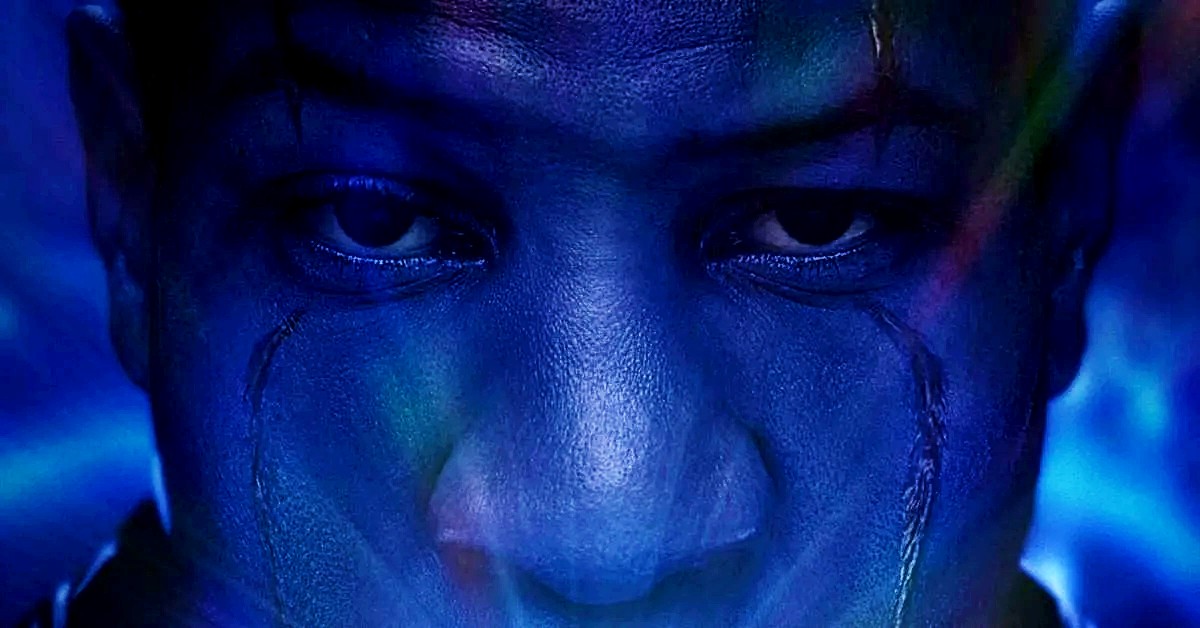How Did Kang Get His Scars? Kang’s Scars, Explained
Unsurprisingly, it's a sad story

Ant-Man and the Wasp: Quantumania premiered on February 17, 2023, and delved deeper into Kang the Conqueror (Jonathan Majors) than the Marvel Cinematic Universe (MCU) ever has before. Majors’ villain was first introduced in Loki as a Kang variant known as He Who Remains. However, Ant-Man and the Wasp: Quantumania featured a very different variant of Kang, who is more aligned with the fierce supervillain iteration of the character from the comic books.
We learn that this variant of Kang is trapped in the quantum realm. To escape, he needs help fixing his ship and powerful time chair. However, viewers also quickly learn that he is no innocent traveler who simply lost his way and is looking for a way back home. His plans are nefarious to the core. He strikes fear and intimidation into everyone he meets as he tries to get out of the entrapment by any means necessary. Hence, Ant-Man (Paul Rudd) and his gang find themselves in a precarious situation when they are forced into Kang’s presence in the quantum realm.
While the film unveiled Kang’s situation, motivation, and formidability as a villain, it didn’t quite explain every detail of the character. One such detail is the scars lining Kang’s face. These scars run parallel down his face, stretching from above his eyebrows and down his cheeks. The scars served quite a practical purpose, as they effectively distinguished this Kang variant from He Who Remains and give him the more rugged and brutal appearance of a conqueror. However, is there a story behind the scars as well?
Kang the Conqueror’s scars, explained
In Ant-Man and the Wasp: Quantumania, Kang’s scars are never explicitly addressed. However, they seem to be a take on Marvel Comics’ depiction of the character’s facial markings. Kang the Conqueror #1, released in 2021, unveiled the tragic backstory of why Kang has markings on his face. In the issue, Nathaniel Richards is visited by the future version of himself, Kang the Conqueror. Kang went back in time to take his younger self under his wing. Kang ingrains coldness and brutality in this younger self to make him a formidable villain.
Kang was especially against Richards forming any relationships or developing sentimentality. However, things went awry when the time-traveling mentor and mentee forayed into the year 65,000,000 BC. During the exploration of the prehistoric world, Richards came across a young woman being attacked by a Tyrannosaurus Rex and saved her. Upon saving her life, he quickly fell in love with the young woman, whose name was Adi. Richards’ heroic rescue earned him the favor of Adi’s tribe, and they honored him by drawing two blue lines on his face.
However, all of this infuriated the older Kang. To punish Richards, he slaughtered the entire village. This marked the end of Richards’ relationship with Adi and comradeship with the tribe. It is clear that he never forgot that incident, as he kept the markings on his face and, later, added them to his mask.
Of course, this is just the comic book explanation for Kang’s unique facial markings. The MCU could create a different backstory to explain his appearance. It would make sense if, in this iteration, he carved the scars on his own face to make the tribe markings permanent.
(Featured image: Disney)
Have a tip we should know? tips@themarysue.com